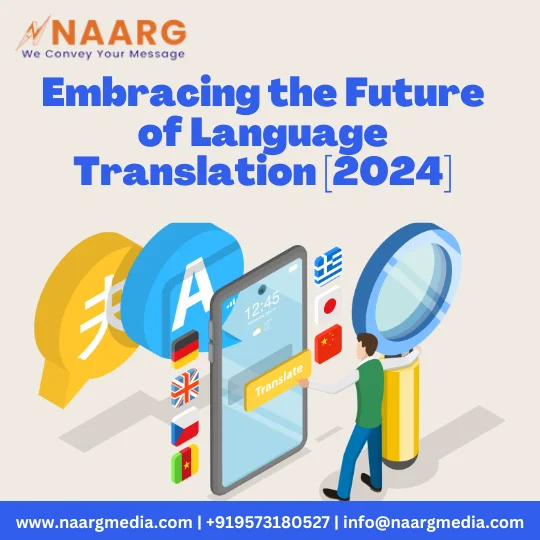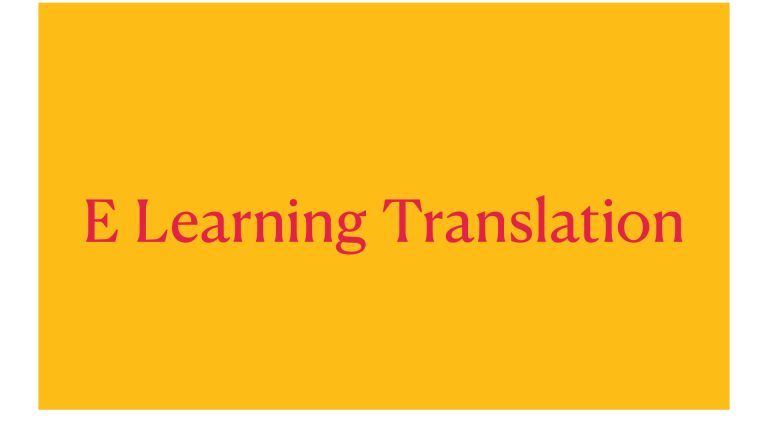As we approach the year 2024, the landscape of the translation industry and translation trends is buzzing with innovation and change. Added to this are technological advancements and evolving market needs. The translation industry in 2024 promises to be immensely exciting! And we cannot wait to unravel what new trends will bloom in the translation industry.
With all these technological advancements and emerging translation technologies, our translation industry is keeping itself at the forefront of innovative change. This could be understood by these latest statistics, which show that the translation services market plans to remain robust and is predicted to reach a staggering USD 53.5 billion by 2032.
Want to know the future of translation? Then this blog will tell you about the translation trends and how they will reshape the industry.

Importance of Translation in Modern Society
Did you know that there are 7168 languages in our world? Today, language is so fundamental to everybody, and yet the irony is that we barely understand more than two or three languages during our lifetime. Have you ever thought about the role that language plays in our lives and how there are different forms of speech? And for this we all are connected through a thread called Translation. It’s amazing, isn’t it? Keep that in mind: the importance of translation in our modern society is much more needed than ever before.
It facilitates the exchange of ideas, knowledge, and information across linguistic barriers, thus enabling people from different cultural backgrounds to understand and engage with each other. Translation also becomes essential in our society because it promotes cultural understanding as well as fosters economic cooperation and diplomatic relations.
Furthermore, we are living in a digital age where information is constantly shared across borders, and this is where translation ensures that content is accessible and relevant to a diverse audience. We can easily affirm that the translation and translation industry is a cornerstone of cultural diversity, enhancing global collaboration and effective communication in our modern and multilingual society.
Future of Language Translation
There is no doubt that the future of language translation lies in the collaborative approach between human translation and artificial intelligence. Where human translators and artificial intelligence, or AI tools, will work together in unison. This collaborative approach could lead to a transition from computer-assisted human translation to human-assisted computer translation.
Furthermore, real-time translation capabilities, seamlessly integrated into various communication platforms, are likely to become the norm. Hence, breaking down language barriers in both personal and professional settings. Additionally, we will see the evolution of translation technology that is anticipated to enhance the preservation of linguistic diversity by making different languages accessible.
As we move forward, the future of language translation appears to be characterized by precision, efficiency, and a deeper appreciation for the richness of global linguistic landscapes. We can vouch that the future of translation looks promising, as translation technology will continue to empower human translators to deliver high-quality translations. Hence, combining the strength of human translators’ expertise with AI-powered capabilities.
Translation industry trends
The translation industry trend in 2024 will be marked by several cutting-edge trends and technologies, hence shaping the landscape of the translation industry. Let’s have a look at the top translation industry trends that are going to rule in the year 2024.
1. AI in translation
As we all know, artificial intelligence and neural machine translation are making significant strides in our translation industry. The strength of these translation technologies will enhance efficiency, and they are also getting better at delivering accuracy. Yes, they are not a complete substitute for human translators, but they will come in handy in terms of collaboration. We need to understand that artificial intelligence and human translators are not in a race against each other. Instead, it should be viewed as a translation tool that supports human translators. With this collaborative approach, AI in translation in 2024 will lead to a more natural and coherent output.
2. Increase in demand for language services
The demand for language and translation services will increase because economic and technological developments are changing. The increased connectivity is bringing the global business landscape to global markets like Asia, South America, and the Middle East. Businesses are increasingly recognizing the importance of presenting their product or service in a way that resonates with the global market. The rise of multimedia content also enhances translation solutions like video translation in various languages.
3. Remote Interpreting Services
As we have seen the rise of remote work, there is a growing demand for remote interpreting services. This trend involves providing translation and real-time interpretation for virtual meetings, conferences, and events, enabling global participation without language barriers. The rise in translation and interpretation services reflects a response to the evolving landscape of work and communication. Making cross-cultural communication more effective and accessible.
How to choose the right translation technology provider in 2024
To choose the right translation technology provider, you must first access your translation needs and then accordingly evaluate them based on the factors listed below.
1. Determine what your translation project needs
Before you look for a translation company, it is essential that you first determine your specific requirements for the translation project. What does your translation project demand? Does it require only translation? Are translation services required in a single language or multiple languages? Once you understand all these requirements regarding your translation project, then it will allow you to better evaluate your potential translation service provider.
2. Quality of translations
When choosing a translation company, it is essential to map out the caliber of translation services. Because inaccurate translations can cause misunderstandings and even reputational harm to your company, So, always choose a translation service provider that has a solid reputation for producing high-quality translations and certifications.
3. Turnaround Time
Nowadays, speed is critical in today’s fast-paced business environment. So, when choosing a translation company, consider the turnaround time for completing translations. Always look for a company that can complete tasks quickly without hindering quality.
All these parameters are essential for choosing the right translation service provider to help you provide the best output. All in all, the future is interconnected and multilingual, where language translation plays a pivotal role in bringing us together.
And at Naarg, we are excited to be a part of it. So, what are you waiting for? Contact us today to create and communicate together.

